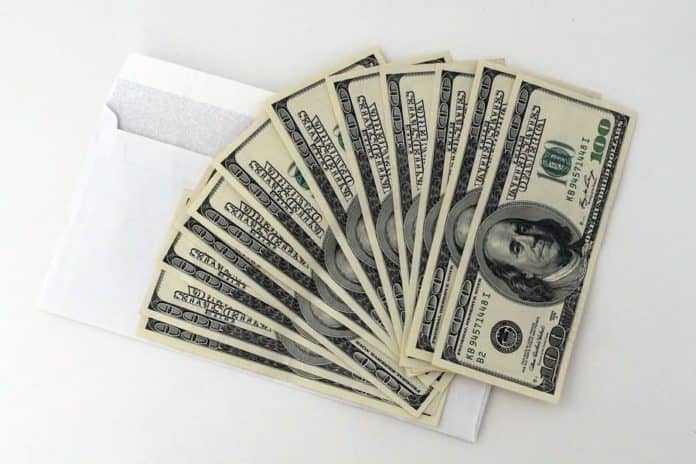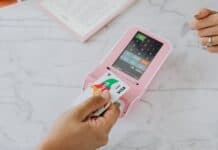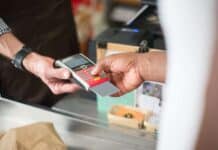In a world full of cashless transactions, you may think that the only way to take your money out of your bank account is by transferring it directly to someone else or buying something with it. However, this isn’t the case. There are still many ways you can withdraw money from your bank account, even if they aren’t digital and involve old-fashioned paper cheques instead of obviously superior digital alternatives. In fact, some methods are even more archaic than that. You might be surprised by how many different ways there are to withdraw money from a bank account using cheques as a medium of exchange. But don’t worry – there are plenty of reasons why these options might be preferable for you in certain situations, so you don’t need to be afraid of them. If you want to know more about withdrawing money with a cheque, keep reading and discover all the details below.
How To Withdraw Money With Cheque?
ATM Withdrawal
If you’re withdrawing money from an ATM, you might be wondering why we’re talking about cheques at all. After all, ATMs don’t have cheques inside them! Well, no, they don’t, but banks use the same infrastructure to process ATM withdrawals and cheques, so one often leads to the other. To put it simply, when you make a transaction with a cheque at the bank, the funds are deducted from your account right away. This means that at any time you could go to the ATM and withdraw the same amount. However, this isn’t the only way to do it. You could also make a withdrawal by cheque, and then instruct the bank to transfer the funds from the cheque to your account at a later date, by which time the cheque would have cleared and the funds would be available again.
Cheque Disbursement
If you have a cheque that you’d like to deposit but don’t have a bank account, you could submit it to a bank for cheque disbursement. This means that the bank would send the funds from your account to the payee of your cheque. After receiving the funds, the payee would then come to the bank and pick up the cheque. Once the cheque has been cashed, they’d return the funds to the bank, and the bank would then return the funds to your account. This isn’t common practice nowadays, but it could be an option if you needed to pay for something that required you to pay by cheque, but finding someone who accepted cheques wasn’t easy.
Cheque truncation
Cheque truncation is a process where the bank would record details from one cheque and use them to create another cheque. For example, if you owed someone money and were paying them by cheque, they could take the cheque and give it to the bank. The bank would then record the account number and details about the cheque, and then create another cheque for that person, but this time it would be drawn on your account. This process would allow them to collect from your account as soon as the funds were available, without having to wait for the cheque to clear. It would also allow them to collect the funds instantly because the cheque they took from you would be the same as the one you paid with.
Electronic Cheque Clearing (ECC)
If you make a payment by cheque and it is then deposited into someone else’s account, the payee may choose to take it to a bank for Electronic Cheque Clearing. This would allow them to receive the funds immediately by having the bank mark the cheque as cleared, rather than having to wait for the funds to be transferred from your account. The payee would then record the details of the cheque in a central database, so they’d be able to prove that they received the funds. This would be especially useful if you were making a payment to someone who wasn’t trustworthy and you were worried they wouldn’t get around to cashing the cheque before it cleared.
Electronic Transfer During Settlement (ETDS) and Real-Time Clearing House (RTC)
Like cheque truncation, Electronic Transfer During Settlement and Real-Time Clearing House would allow a bank to process a cheque instantly, rather than having to wait for the funds to be withdrawn from your account and then be transferred to the payee. This could be done by going into your account, taking the funds, and then immediately depositing them into the payee’s account. Although this would mean the payee would receive the funds before you do, most modern banks would also record the payment on your account as soon as they do it, so you’d be able to see it was withdrawn.
Electronic Cheques (EC)
The final option we’ll discuss is the use of an Electronic Cheque. This would be a cheque that was paid in full and recorded on a distributed ledger. Essentially, this would be a cheque that was added to a blockchain. This would allow you to send funds instantly, instead of having to wait for the cheque to be cashed and cleared.
Limitations of Withdrawing by Cheque Conclusion
As you can see, there are plenty of ways to withdraw money from a bank account by cheque, but some are much more outdated than others. While it’s unlikely that these methods will disappear anytime soon, it doesn’t mean that they can’t be improved upon. Thankfully, modern technological progress means that many of these old practices are actually being replaced with digital equivalents. Although this means that some of them have become redundant, it also means that you can rest assured that the cheque methods you choose to use are more secure and trustworthy than ever before.
Why Should You Use Cheques To Withdraw Money?
- Cheques are still a popular form of payment.
- They’re safer than cash, especially when you use a cheque card or cheque guarantee card.
- They have the same legal standing as cash in most countries and can be used for tax purposes.
- You can use them to pay bills or make payments to your landlord, even if you don’t have any cash on hand at the time.
- Most banks will allow you to withdraw money from your account by cheque for free, but there are some that will charge a small fee for each withdrawal you make by cheque from an ATM or branch location (usually less than $3).
How Do You Withdraw Money From An ATM Using A Cheque?
- Find an ATM that supports cheques (most ATMs will).
- Select the option to withdraw money using your checkbook and debit card (if necessary). Some ATMs may require you to select this option before inserting your debit card and PIN number into the ATM in order to complete the withdrawal successfully – if this is the case, make sure that you do it correctly before trying again if it doesn’t work on your first attempt!
- Insert your debit card into the ATM and enter your PIN number when prompted (make sure there aren’t any hidden fees attached!). If successful, this should then prompt you to enter the amount of money that you’d like to withdraw.
- Enter the amount of money you’d like to withdraw, and if successful, this should then prompt you to insert your checkbook into the ATM.
- Insert your checkbook into the ATM (it may take a few moments for it to be accepted). This will then prompt you for a cheque number – this is typically found in the top left-hand corner of your checkbook, but there may be slight variations depending on which bank you use and how old your checkbook is (if it’s an older one, it may simply have a handwritten number somewhere on it).
- Enter the number of the cheque that you’re using to make your withdrawal into the ATM, and if successful, this should then prompt you for an amount of cash that you’d like to receive from your withdrawal – most ATMs will let you choose between notes or coins; some ATMs also allow you to choose whether you want Australian or foreign currency (if applicable).
- Choose which form of currency you require: either Australian dollars or foreign currency (if applicable). This should then prompt you to confirm whether or not this is what you require as well as give a final confirmation before processing your transaction.
Conclusion
As you can see, withdrawing money from an ATM using a cheque is very similar to withdrawing money using your debit card. Both methods also require some form of identification (either your debit card or a driver’s license), and both may also include additional fees – for example, if you don’t have enough money in your account to cover the withdrawal that you made, or if there are other hidden fees attached to the withdrawal that you made (for example, if you don’t have enough funds in your account to cover the withdrawal fee).












